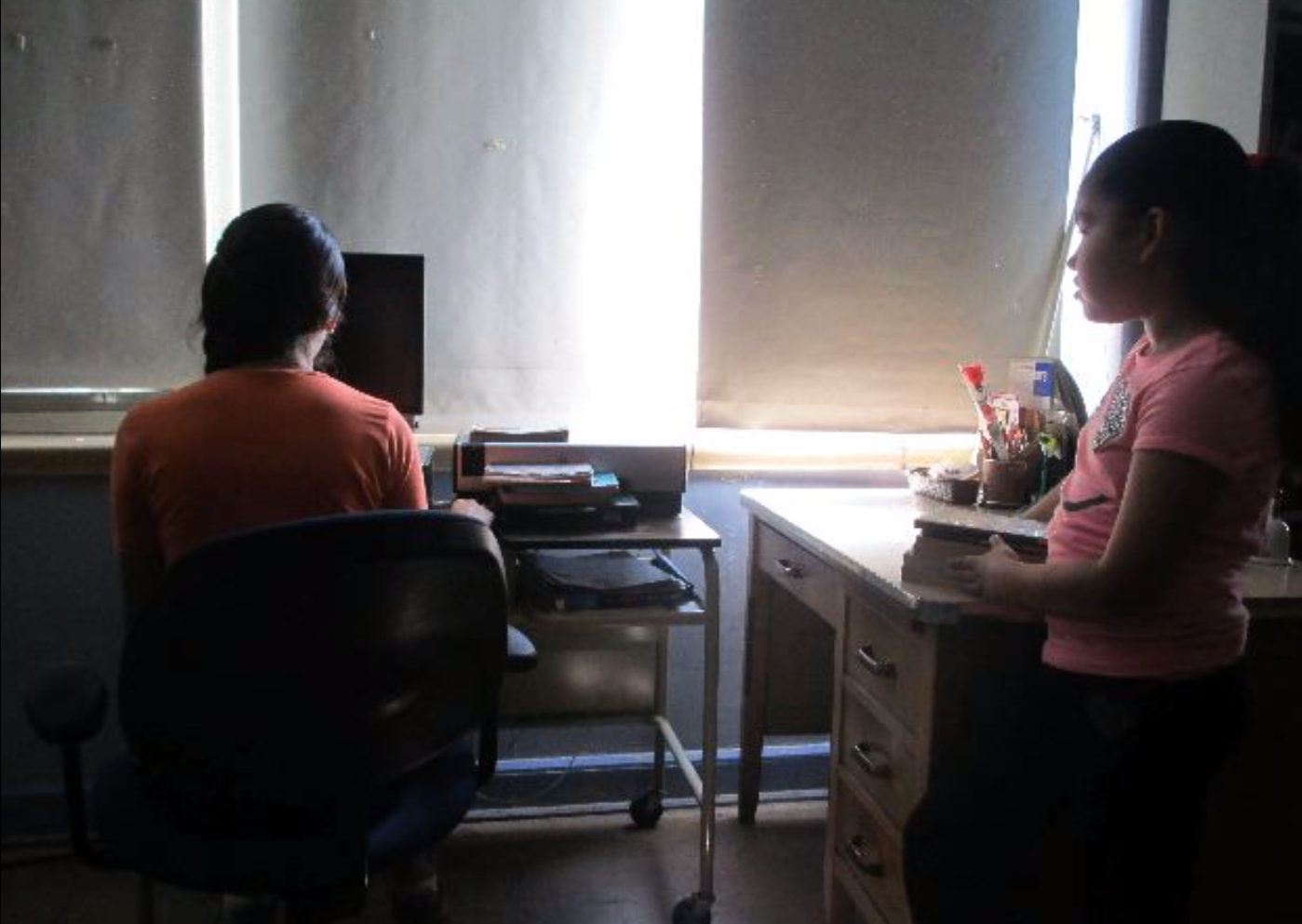The Urban Gateways T-shirt plays off of the Chicago flag with its four red stars and two blue stripes. Inside of the four Urban Gateways stars are symbols to honor four areas of the arts utilized by UG programs. From left to right, they represent music, visual arts, dance, and digital media. UG programs involve all of these art forms, but should we be placing equal emphasis on them? Are some art forms inherently “better” or more difficult to master than others?
(T-shirt detail from iamurbangateways.org)
During the Italian Renaissance, artists and scholars spent long hours debating the comparative merit of the arts. They even had a special word for it in Italian, paragone.
The “giants” of the Italian Renaissance, Michaelangelo Buonarroti and Leonardo DaVinci, were known rivals that often battled it out for commissions from similar patrons. Much like the ninja turtles that took their names, Leonardo and Michelangelo had strong opinions and fought to defend their beliefs. As the artist of history’s most highly recognized and reproduced painting, the Mona Lisa, DaVinci is well known as a painter and often insisted that painting was the most noble of the arts. On the other hand, although many people consider Michaelangelo to be a painter due to his great success in painting the Sistine Chapel, he always considered himself a sculptor and even signed his letters as “Michaelangelo Buonarroti, the sculptor.”
In his Trattato Della Pittura “Treatise on Painting,” Leonardo fiercely argued that his beloved medium was superior. He reasoned that it was much more difficult to attain correct lighting and perspective in painting, as it is not “helped by nature” in the manner of sculpture. In other words, a painter must take something three-dimensional and transform it into something two-dimensional, whereas sculpting does not require the artist to deal with a change in dimensionality.
Sculpting is a more physical act than painting, but does this lend itself to more or less merit? Michelangelo enjoyed the physicality of his art and felt that it reflected his impassioned dedication to his trade. On the other hand, Leonardo wrote that sculpture “causes too much perspiration which mingles with the grit and turns to mud” while the painter “sits before his work at the greatest of ease, well dressed and applying delicate colors with a light brush”. In this approach, painting appears nobler, hinting at his belief that art is meant to engage the mind rather than the body.
Urban Gateways teaching artist Nicole Beck with the welding equipment she uses to make her sculptures (photo: Daily Illini)
While the juxtaposition between painting and sculpture was at the heart of this debate, Renaissance minds also considered music as it relates to paragone. In comparing musical and visual art, Leonardo concluded that hearing is “less noble than sight, in that it is born and it dies and in its death is as swift as its birth”. In other words, he felt that music was not to be taken as seriously as the visual arts because music is temporary.
In this day and age, however, that argument no longer holds true as recording devices allow us to listen to a single performance thousands of times. Furthermore, the benefits of music extend far beyond relaxation and enjoyment. The German philosopher Arthur Schoepenhauer wrote extensively on art and aesthetics in his book The World As Will and Representation. He was of the opinion that music is the highest form of art: “The effect of music is so very much more powerful and penetrating than is that of the other arts, for [the] others speak only of the shadow, but music of the essence.”
There are people that will argue that dance is not an art form, but a sport. This topic was discussed in a previous blog by Urban Gateways’ Director of Marketing, Brian Foster. Dance is often classified as a sport because it requires physical exertion and can be competitive, yet I agree with Brian’s assertion that dance is both an art and a sport, as it leaves room for creativity and allows one to tell a story without words. The French poet Charles Baudelaire wrote, “The dance can reveal everything mysterious that is hidden in music, and it has the additional merit of being human and palpable. Dancing is poetry with arms and legs.” Dance is generally accepted as being the most physically demanding of the arts. The often great physical strain that dancing puts on artists shows a great deal of dedication, leading some people to argue that dance is the most noble form of art. However, we know that many, not the least of them Leonardo, would argue with this assertion.
Although photography was not around to be discussed during the Italian Renaissance, the concepts behind paragone can be applied to this comparatively recent art form. Some may feel that photography does not require as much skill or creativity as other art forms, as it relies on technology. With the advancements of today’s camera phones and Instagram filters, photography is becoming increasingly simple and accessible, but does that mean it is no longer an art? (What about selfies?)
The camera is a tool, but it is a tool in the same way that dancers use pointe shoes and painters use brushes. Without proper knowledge and careful consideration of lighting, focus, angle, timing, and composition, having a camera will not make you an artist. Photographer Ansel Adams once said, “You don’t take a photograph, you make it.”

Digital photography by Angie at Stevenson School from Urban Gateways teaching artist Ewa Bloch’s digital photography class
Different art forms allows us to express ourselves in different ways, and Urban Gateways works with both teaching and performing artists in all different styles and media. While everyone has their preferred art form, I believe that any art medium that requires a person to think creatively is a worthy and equal pursuit. What do you think? Is there any one art form that is better than the others? Is it still worth discussing? Let us know in the comments!



